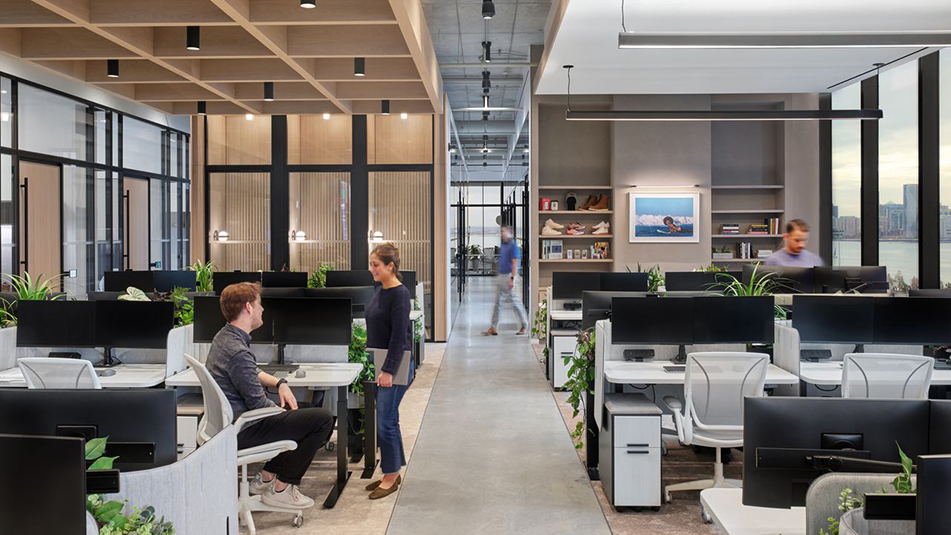The Hybrid Office is Not the New Normal—It’s the Transition
This Blog was Originally Posted by DCEO on July 2, 2021
It is readily apparent that Texas, like other states with people eager to work, is emerging from the long-haul lockdown of Covid; traffic is increasing, causing me to be late after months of flying around town without pre-pandemic slowdowns. Office parking garages are filling again, which is a natural warning to prepare for more door dings.
This indicates many are returning to work which should cause us to pause and consider what is really taking place. The most common term one hears related to return to the office is “hybrid workforce.” All this means is a new normal has not yet arrived; hybrid means we are in transition. I was fortunate to participate on a panel with strategists from Europe a few weeks ago and the consensus was that we should expect workplace variations to continue for the next 12-18-24 months.
The next six months will include a “testing the water” period that includes these variations:
- Employees make their own decisions about when to come back to the office.
- Employers are asking those that are vaccinated and comfortable to return to the office two to three days per week.
- Some employers are demanding a return to the office as of August or September.
![]()
This season will reveal varying levels of comfort. Some people weary of being home will run back to the office. Those that enjoy taking zoom calls wearing a dress shirt and pajama bottoms will be slow to give up that comfort. Parents of small children are having to reacclimate to finding child-care alternatives.
The next period starting in January of 2022 will be “semi-stabilization.” Companies will assess the success (or lack thereof) of the policies they put in place the prior six months and adjust accordingly. Expect:
- Employers will strengthen their requirements for a return to the office – probably allowing employees to retain the opportunity to work from home one to two days per week – but expecting more in-office engagement.
- Companies will start to adjust their workplace environments offering fewer assigned seats with some form of seat-sharing (back to that worn-out term “hoteling”). This could cause organizations to deploy some form of mobile application reservation system such as tools like the “Billie” app or “FreeSpace.”
- Early adopters will start to spend money on minor remodel projects that will:
- Convert office space to enclosed collaboration spaces for two to three workers
- Add more open collaboration space.
![]()
The following six months (starting in July 2022) “stabilization” will gradually encompass the new normal. Companies will have formalized their hybrid work policies and procedures. Everyone will have a much stronger sense of what is expected and how to comply. More money will be spent to transition the work environment to meet the changes in how space is used. Of course, this all assumes no new Covid spikes that cause lockdowns.
What should organizations consider as the emergence starts?
It would be unwise to expect employees to manifest a monolithic response to the return to the office. Some researchers report a “Covid Trauma Syndrome” where the brain’s natural fight or flight mechanisms were triggered during Covid. Fear creates varying levels of paralysis. Emotionally intelligent employers will offer plasticity to accommodate varying employee responses.
A focus on “employee experience” may never have been more important. Employers should consider regular methods of gauging the employees’ needs and how their efforts of accommodation are working. As employees calm down, brain chemistry will allow the prefrontal cortex to start operating at normal levels and productivity will naturally increase.
If you engage HR consultants, workplace specialists, or real estate professionals and they start with “We have the solution,” run for the hills. Despite a natural yearning for “the answer,” one does not exist. The strongest recommendation consists of a workplace strategy that is unique for every organization.
Now is the time to get to know your workforce, its level of comfort for your planned changes, and a very purposeful change management strategy with much more robust levels of communication than ever deployed before. Success will come from being highly attuned to your organization and meeting needs that you previously never knew existed. The emergence from Covid could be the single greatest opportunity to transform your organization. These transitions, regardless of duration, require focus, attention, and creativity.
Larry Kelso is the senior vice president of Workplace Strategy and Program Management at Cresa.


